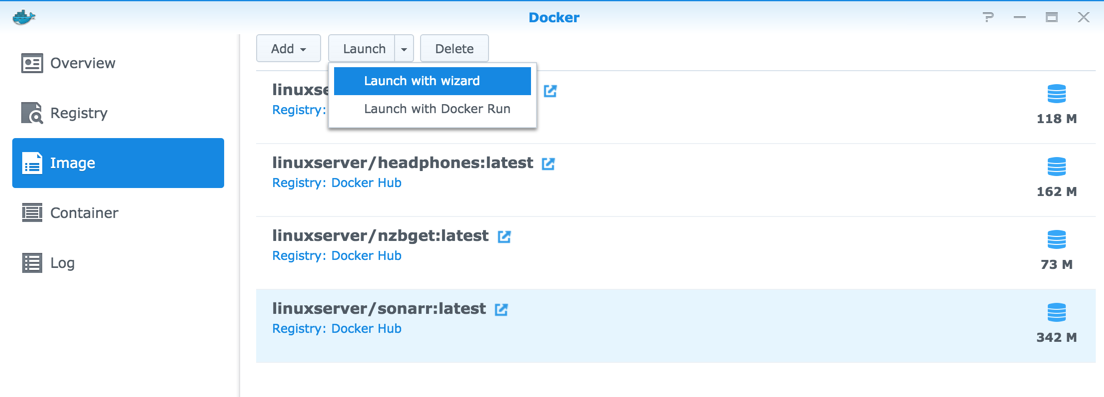
This will ensure Pi-hole restarts if you ever need to reboot your Synology. Once in Advanced Settings, check the box the Enable auto-restart. Leave Execute container using high privilege unchecked, then click on the Advanced Settings button. In the first step, give the container a name I personally went with PiHole, but you can use whatever makes sense to you. The container configuration wizard should now launch. Select the Images tab from the left-hand panel and double-click on the Pi-hole image you downloaded earlier.

We’ve downloaded the Pi-hole image and we now need to setup the container correctly. Once done, it should look something like this: Configuring the Docker container Once you have your new pihole folder, create two more folders within it one called pihole and another called dnsmasq.d. Navigate to the Docker folder and create a new sub-folder called pihole. Now we need to flip to the Synology File Station app.
#SYNOLOGY SONARR DOWNLOAD#
You should see the official Pi-hole at the top of the list.ĭouble-click on the official Pi-hole image to download it to your Synology. Next, launch the Docker app, click on Registry from the left-hand pane and search for pi-hole.

#SYNOLOGY SONARR INSTALL#
So launch the Synology Package Centre, search for docker and click on the Install button. Right then, let’s get to work, shall we? The first thing you’re going to need to do is install the Synology Docker app. So I’ll take you through what settings you need to tweak in order to make this happen. This issue on Github talks about the problem in a little more detail.Īd and tracker blocking will work with the default settings, but to get a true picture of what’s going on with your network, you need to see all the clients separately. However, you will end up seeing all the clients on your network bundled under a single 172.x.x.x IP address, which is the Docker gateway IP.

To get Pi-hole up and running, you could download the image, spin a container with the default settings and it will work. I’m sure you can gather than from the name, Pi-hole was originally designed to run on the Raspberry Pi.īut I don’t like the idea of having something as crucial as DNS running on a RPi, so I run Pi-hole on my Synology ( I have a DS218+). I’ve been using Pi-hole on my network for a few weeks now and things are going great. In this post I’m going to take you through setting up Pi-hole on a Synology NAS using Docker. Using a Pi-hole on your network is a great way of blocking adverts and protecting you from tracking at a network level.


 0 kommentar(er)
0 kommentar(er)
